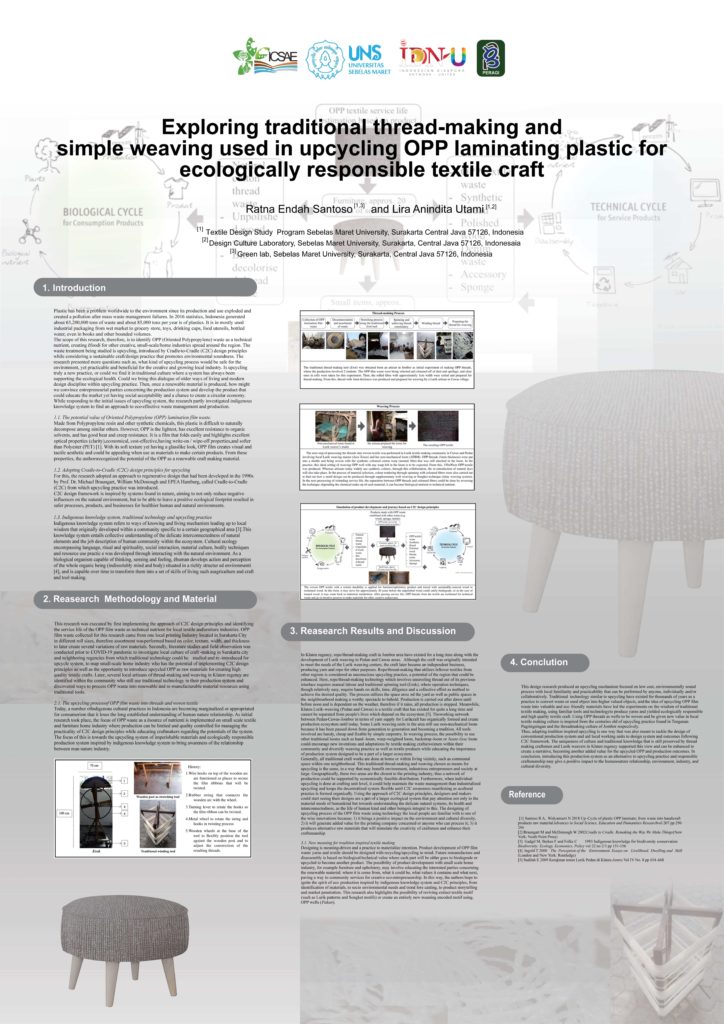Paper ID: 42
Exploring Traditional Thread-Making and Simple Weaving Used in Upcycling OPP Lamination Plastic for Ecologically Responsible Textile Craft
R E Santoso1,3* and L A Utami1,2
1Textile Design Study Program, Sebelas Maret University, Surakarta, Central Java 57126, Indonesia
2Design Culture Laboratory, Sebelas Maret University, Surakarta, Central Java 57126, Indonesia
3Green Lab, Sebelas Maret University, Surakarta, Central Java 57126, Indonesia
Email: ratnaendahsantoso@staff.uns.ac.id
This design research explores OPP (Oriented Polypropelene) plastic waste upcycling practice using traditional thread-making mechanisms and a simple hand-weaving process that aims to create an alternative raw material for ecologically responsible textile craft while forwarding a sustainable craft/design practice that promotes environmental soundness. By combining cultural investigation into the local tradition of textile-making with the cradle-to-cradle design principle of “waste equals food/resource”, we identified the potential of traditional textile-making as an eco-friendly and low-cost production process vis-à-vis how to improve the service life of technical waste material and developed methods of upcycling that turn plastic waste into material resources for unlimited creative outputs. The specific waste being studied and used in experimentation is OPP (Oriented Polypropylene) lamination plastic gathered from local printing industry that uses the material in finishing process of book covers, packaging and others. The use of OPP is a common practice found all over the country and its waste is among the least recycled. After observing its characteristic, we looked for simple processes within the indigenous technology and ideated ways of upcycling from a traditional thread-making technique considered as endangered cultural practice whose hand-woven thread created fabric material by non-mechanical loom.
This in-depth design research resulted in: (1) techniques of thread-making using a traditional tool and skill improvement that produced different sizes of thread as raw materials for making an aesthetically pleasing woven textile, (2)re-recognizing and revitalizing endangered indigenous technology of craft-making that had been a part of human-nature ecology, (3) education and implementation of eco-design practice that can be accepted by local textile craft community as well as entrepreneurial units in the region, and finally (4) development of textile craft product by a creative upcycling process that may express local identity and environmental soundness.
